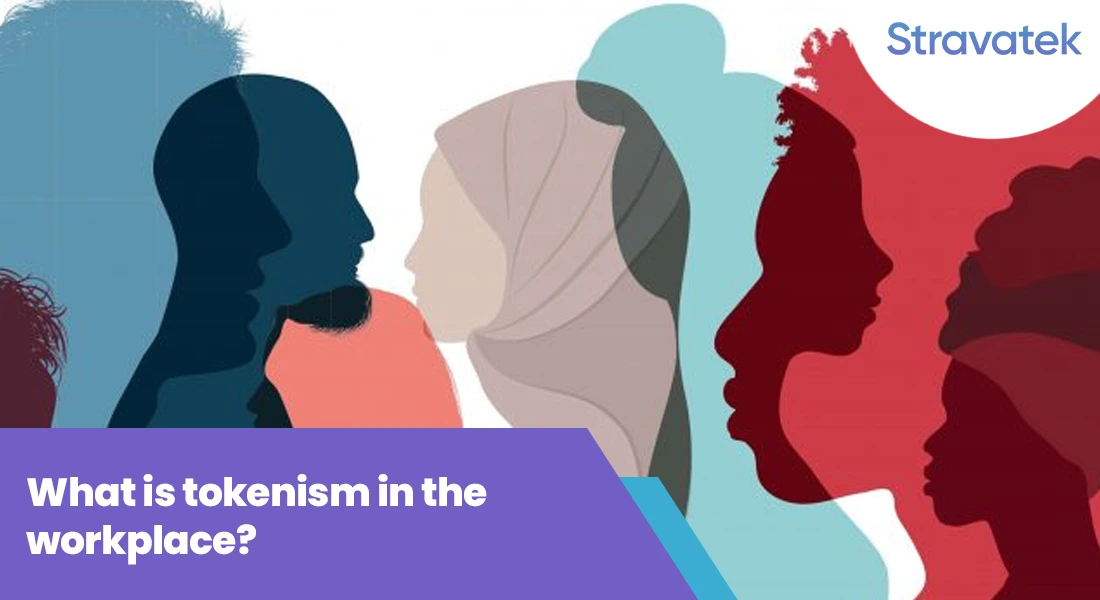What is Tokenism in the Workplace?

In the ever-evolving landscape of modern workplaces, the focus on diversity, equity, and inclusion (DEI) has taken center stage. Data indicates that over 75% of job seekers would not consider working for a company that does not allocate substantial resources toward prioritizing Diversity, Equity, and Inclusion (DEI) initiatives. Tokenism in the workplace is very important.
Organizations worldwide have recognized the myriad benefits of inclusivity, such as enhanced creativity, higher employee engagement, and improved retention rates. However, a critical issue arises when these diversity efforts are not genuinely intentional, leading to a phenomenon known as tokenism in the workplace.
What is Tokenism?
Tokenism in the workspace, in its essence, is the practice of making minimal, symbolic efforts to appear inclusive, especially in terms of diversity. It is a superficial form of DEI, where companies might hire a few diverse candidates or portray a diversified workforce on their websites, which does not reflect their actual employee demographics. This practice can lead to adverse outcomes, such as inappropriate hiring decisions and a lack of genuine engagement with diverse employees.
Concepts of Tokenism in the Workplace
Tokenism in the workplace is often identified by two key concepts: ‘token minority’ and ‘tokenistic’ practices. Each term provides a different perspective on how superficial efforts at diversity are manifested in work environments.
What is Token Minority?
A token minority is an individual from an underrepresented group included in a workplace mainly for symbolic value. Typically, they are displayed as proof of diversity but lack real influence or power, reducing their role to a mere symbolic presence rather than a substantive one.
What is Tokenistic?
Tokenistic practices refer to superficial actions by organizations to appear inclusive. Such practices focus on outward appearances and neglect the necessary systemic changes for real inclusivity and diversity.
Examples of Tokenism in the Workplace
Tokenism in the workplace can manifest in various forms, often subtly embedded in the organization’s culture and practices. Here are some examples to illustrate how tokenism can occur:
The ‘One and Only’ Scenario:
A common form of tokenism is when a company hires or promotes a single individual from a minority group to showcase diversity. This might be the only person of color in a leadership position or the sole woman in a technical team. In such cases, these individuals often feel isolated and are perceived as symbolic representatives of their entire group rather than being valued for their unique contributions.
Superficial Diversity Initiatives:
Some organizations may initiate diversity programs or celebrations without integrating these values into their core operations. For instance, a company might celebrate International Women’s Day or Black History Month with events or social media posts but lack significant representation of these groups in decision-making roles or fail to address systemic issues affecting them.
Diversity in Marketing, Not in Reality:
A classic example of tokenism is when companies use images of diverse groups in marketing materials to project an image of inclusivity. However, their actual workforce or leadership teams do not reflect this diversity. This creates a disconnect between the organization’s public image and its internal reality.
Stereotypical Roles:
Assigning employees from specific backgrounds to roles stereotypically associated with their race, gender, or ethnicity is another form of tokenism in the workplace. For example, assuming that women are naturally better at nurturing roles like HR or customer service or expecting individuals from certain racial backgrounds to fit into specific job profiles. Visit: HR Expert.
The ‘Diversity Hire’ Label:
Sometimes, even when individuals from underrepresented groups are qualified, their colleagues or superiors may dismiss their achievements, attributing their hiring or promotion solely to diversity initiatives rather than their skills and capabilities. This undermines their professional contributions and fosters a culture of tokenism.
The Harmful Impacts of Tokenism in the Workplace
Tokenism in the workplace can have detrimental effects, both on individuals and the organization as a whole. For employees from underrepresented groups, it can instigate imposter syndrome, leading them to question their capabilities and qualifications. This constant self-doubt and perceived scrutiny can severely impact mental health.
Businesses practicing tokenism risk damaging their brand reputation, as consumers quickly recognize and react negatively to superficial diversity efforts.
How to Avoid Tokenism in the Workplace?
- Hiring Beyond Quotas:
Organizations must look beyond mere numeric goals to truly embrace diversity. This involves a comprehensive approach to recruitment that actively reduces unconscious biases. Education plays a crucial role here: providing training and resources to hiring teams about the various biases and how they can unconsciously influence decision-making is essential. In addition, craft job descriptions using inclusive language, and avoid gendered or culturally specific terms that might deter a diverse array of applicants. Finally, diversifying recruitment channels is critical. This means not only posting on traditional job boards but also reaching out to platforms and networks that cater to specific minority groups, thereby attracting a broader range of candidates. Read more about it at Hiring quotas.
- Embracing Intersectionality:
Intersectionality recognizes that multiple intersecting factors shape people’s identities and experiences. To implement this in the workplace, organizations should conduct thorough surveys to understand their employees’ different identities and backgrounds. Use an anonymous survey to ensure honest responses. Companies use data to grasp employee diversity, guiding tailored training on intersectionality’s workplace effects. This approach fosters awareness, empathy, and a more inclusive work environment, promoting understanding of diverse identities and equitable opportunities. Such initiatives help foster a deeper understanding and appreciation of the diverse needs and perspectives within the organization.
- Incorporating External Perspectives:
Inviting guest speakers and DEI experts from various backgrounds can infuse new life into the organization’s diversity and inclusion efforts. These external voices can provide fresh insights, share different experiences, and offer unbiased evaluations of the company’s current practices. Companies partnering with DEI consultants benefit from an objective review. This process enhances existing policies and practices. The result is alignment with top standards for inclusivity, fostering a more diverse and equitable workplace.
- Respecting Individual Voices:
Organizations need to grasp that they should not burden minority employees with the responsibility of representing their entire community. Creating an inclusive culture involves ensuring that every employee can comfortably share their unique perspectives without facing stereotypes or being pigeonholed. It also means avoiding the automatic expectation of diversity-related roles or spokesperson duties from minority employees. Miniority empoloyees are an integral part of this strategy.
- Transparent Promotion Processes:
A transparent promotion process is fundamental to avoiding tokenism. Organizations should establish and communicate clear, objective criteria for advancement across the company to ensure understanding and transparency. Additionally, it’s essential to train decision-makers, including managers and HR personnel, to apply these criteria fairly and consistently. This approach helps ensure that promotions are based on merit and qualifications rather than serving as token gestures.
- Customizable Benefits Packages:
Offering a range of benefits that cater to the diverse needs of employees is an effective way to demonstrate commitment to inclusivity. This could include flexible holidays allowing employees to celebrate days significant to their cultural or religious backgrounds. Inclusive parental leave policies are also important, accommodating various family structures.
Final Thoughts
Organizations must integrate true equality, diversity, and inclusion into their core business strategies to move beyond tokenism. This involves moving away from superficial gestures, implementing concrete frameworks that promote genuine inclusion, and holding individuals accountable for behaviors that counteract these efforts. True diversity and inclusion can only be achieved by eliminating tokenism in the workplace, thereby paving the way for a genuinely equitable and diverse workplace environment.
Navigating the complexities of creating a truly inclusive and equitable workplace underscores the importance of expert support. Stravatek, a leader in HR outsourcing, offers comprehensive solutions tailored to meet the unique challenges of your organization. Our approach to recruitment emphasizes precision, efficiency, and an in-depth understanding of the culture and values of your organization. If you’re looking to transform your recruitment process and embrace effective DEI strategies, explore our HR Services or contact us to learn more.
© 2021 Stravatek. All rights reserved.


